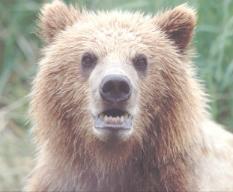 On January 26 and 27 Nan Laney, Skagit and Northern Snohomish GBOP Coordinator, will staff a GBOP booth at the Upper Skagit Bald Eagle Festival in Concrete (Skagit County). This is the fourth year that GBOP has been in attendance at this wonderful and popular event. Additionally, on Sunday January 27th from 12:30-1:30, Nan will be presenting information about the North Cascades’ grizzly and black bears at the festival.
On January 26 and 27 Nan Laney, Skagit and Northern Snohomish GBOP Coordinator, will staff a GBOP booth at the Upper Skagit Bald Eagle Festival in Concrete (Skagit County). This is the fourth year that GBOP has been in attendance at this wonderful and popular event. Additionally, on Sunday January 27th from 12:30-1:30, Nan will be presenting information about the North Cascades’ grizzly and black bears at the festival. The Upper Skagit Bald Eagle Festival, in it’s 21st year, often draws crowds that exceed 4,000 attendees. This free 2-day event is one of the culminations of the eagle watching season in the Upper Skagit, and is an excellent opportunity to learn more about North Cascades raptors, salmon and other wildlife, geology, archeology and Native American culture. Each year, the entertainment on Saturday night features Native American storytelling, drumming and dancing. The emphasis on the Native American culture and it’s ties to wildlife and the North Cascades is always a highlight of the festival. Additionally, a big draw for attendees are the live raptors brought in by Sardis Raptor Center, with presentations including the live birds interspersed throughout the weekend.
For more information about the festival, including information on presentations and events, check out the festival’s website.
Teacher clock hours are available for attending the event.
Skagit River Interpretive Center
At 11:00 AM on Sunday February 17th, Nan will also be doing a presentation at the new Skagit River Interpretive Center in Rockport. Thanks to the hard work of many nonprofits and individuals in Skagit County, the Interpretive Center, formerly located in the old Rockport Fire Hall (which itself was renovated from an old school house), moved to it’s new home next to Howard Miller Steelhead Park. In association with the peak eagle viewing season, the Interpretive Center hosts presentations on Saturday and Sunday during the months of December, January and February each year.
Visit the Skagit River Interpretive Center website for more information, including speaker schedule.
Festival poster was created by Don Smith, Cascadian Farm senior designer, with help from Concrete High School students.

